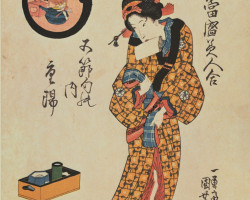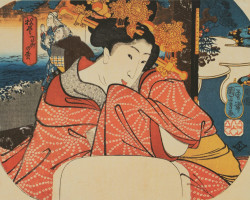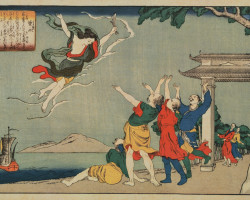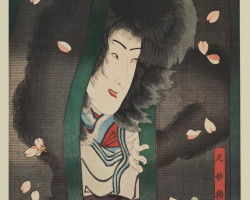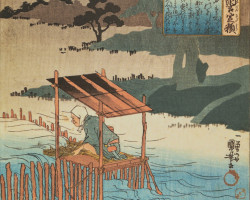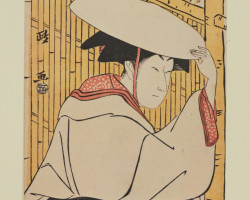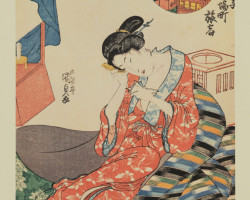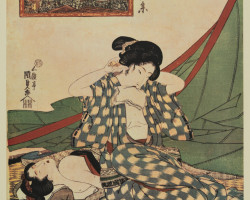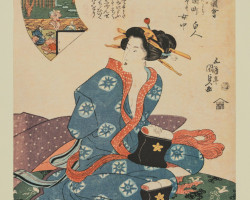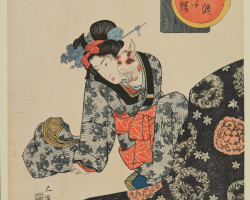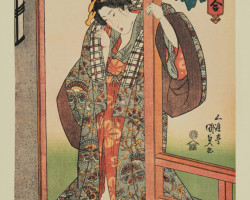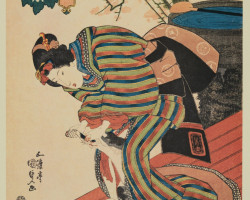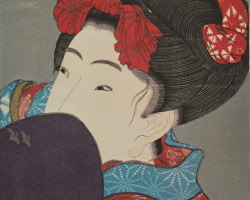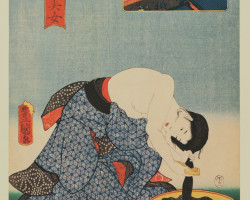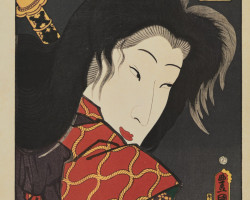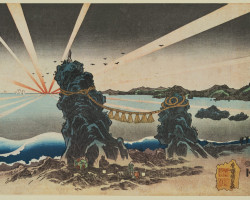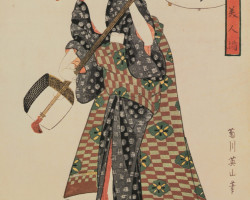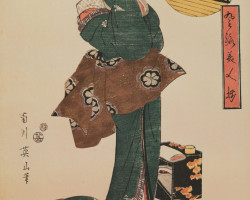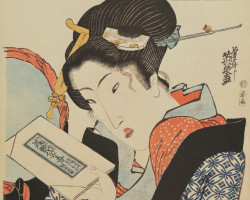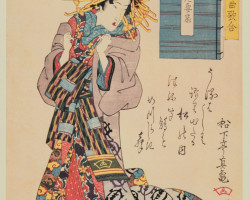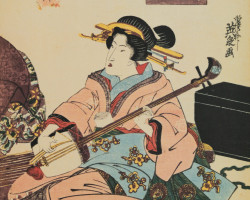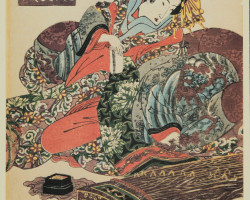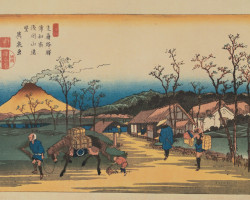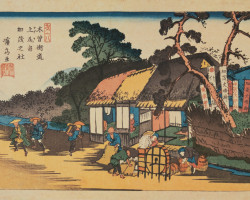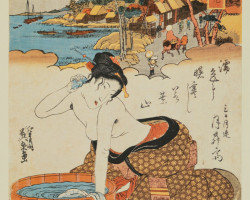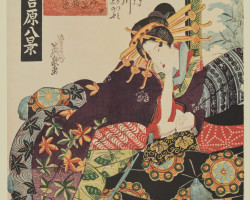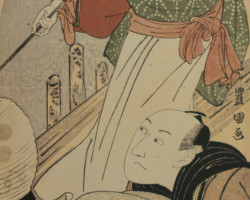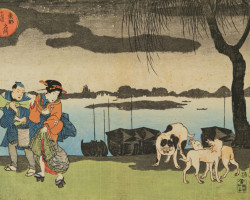Ukiyo-e is a genre of Japanese art which flourished from the 17th through 19th centuries. Its artists produced woodblock prints and paintings of such subjects as female beauties; kabuki actors and sumo wrestlers; scenes from history and folk tales; travel scenes and landscapes and flora & fauna
Utagawa Toyokuni (1769 – 1825)
The son of a puppet sculptor, Toyokuni was born and worked in Edo. Entering the studio of Toyoharu at the age of 14, Toyokuni drew inspiration from the famous contemporary artists around him, particularly from the great Utamaro. Toyokuni produced elegant courtesans, fine actor prints, book illustrations, and paintings. He had a strong reputation during his lifetime and taught a host of talented students, including Kunisada and Kuniyoshi.
Utagawa Kuniyoshi (1798-1861)
Was one of the last great masters of the Japanese ukiyo-e style of woodblock prints and painting. He was a member of the Utagawa school.
The range of Kuniyoshi’s subjects included landscapes, beautiful women, Kabuki actors, cats, and mythical animals. He is known for depictions of the battles of legendary samurai heroes. His artwork incorporated aspects of western representation in landscape painting and caricature.
